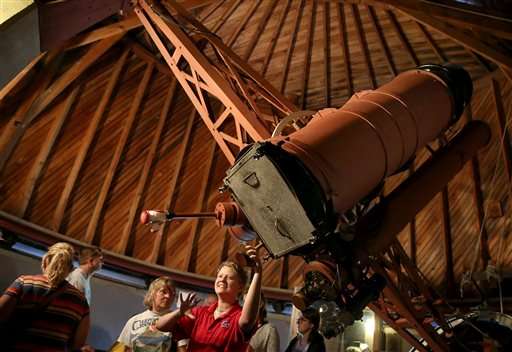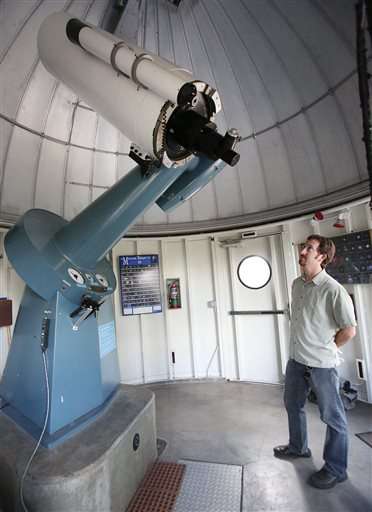Astronomers, billboard companies clash over signs that shine

Arizona has long been a haven for astronomers who take advantage of its mountain peaks and vast stretches of dark, desert sky to gaze at stars and planets. The state is also home to a thriving billboard industry whose signs light up a vast network of freeways.
The two industries have long clashed, and they are in the midst of another fight in the Arizona Legislature.
A bill would allow electronic billboards to shine in two counties in the western part of the state, where they have been banned under a 2012 agreement. The deal designates a corridor for dark skies to limit light pollution around observatories.
Astronomers say the exemption will threaten dark skies, but billboard makers don't believe it will hurt the industry. The House passed the bill on a 32-26 vote Tuesday, and it now moves to the Senate.
Here is a look at the battle between billboard makers and astronomers:
WHAT IS ARIZONA'S DARK SKY CORRIDOR?
It is a zone created to protect the night sky from street lights, electronic signs and other sources of excess artificial light, known as light pollution. It is basically a buffer surrounding the state's main observatories.
Astronomers and others use the corridor to observe the night sky for research, stargazing, GPS monitoring and even national defense purposes, said Jeffrey Hall, director of the Lowell Observatory in Flagstaff.

The 2012 agreement allows electronic billboards in Phoenix and some western parts of the state along Interstates 8 and 10. Phoenix billboards were exempt because the metro area already emits vast amounts of light, so a change would not make a difference for dark skies.
WHAT'S AT STAKE FOR ASTRONOMERS?
Arizona is home to three of the country's largest telescopes—at Lowell Observatory, Kitt Peak National Observatory outside Tucson and Mount Graham National Observatory near Safford.
The astronomy industry has capital investments totaling $1.3 billion in Arizona as of 2008, and it spends an additional $250 million annually, Hall said.
Hall says the measure would renege on the 2012 compromise and could lead to fewer limits on light pollution in the future.
"It sends a very bad message to future, potential investors that Arizona is slowly loosening its restrictions that the Arizona dark sky community depends on," he said.
The proposal would allow electronic billboards along the Interstate 15 corridor in the northwest corner of the state that could impair a park with a dark sky designation, said John Barentine, program manager with the Dark-Sky Association.
WHY NOT ALLOW ELECTRONIC BILLBOARDS?
Dark sky advocates are concerned light that the signs emit could affect the sensitive technologies used to look at distant celestial bodies.
Concessions made in the 2012 agreement force the billboard industry to dim their displays at night and shut them off after 11 p.m.
Billboard companies, including industry giant Lamar Advertising, now want to loosen some of those restrictions. Tim La Sota, who lobbies for the company, said Mohave and La Paz counties fall outside the buffer zone for observatories and were largely left out of discussions on the deal.
La Sota said dark sky advocates don't have to worry about electronic billboards in rural areas.
"People aren't going to put these billboards out on an untraveled country road. It doesn't make any commercial sense," he said.
Billboard companies would most likely build new electronic signs along Interstate 40, Interstate 15 and U.S. Highway 93 around Kingman and Bullhead City.
© 2016 The Associated Press. All rights reserved.


















